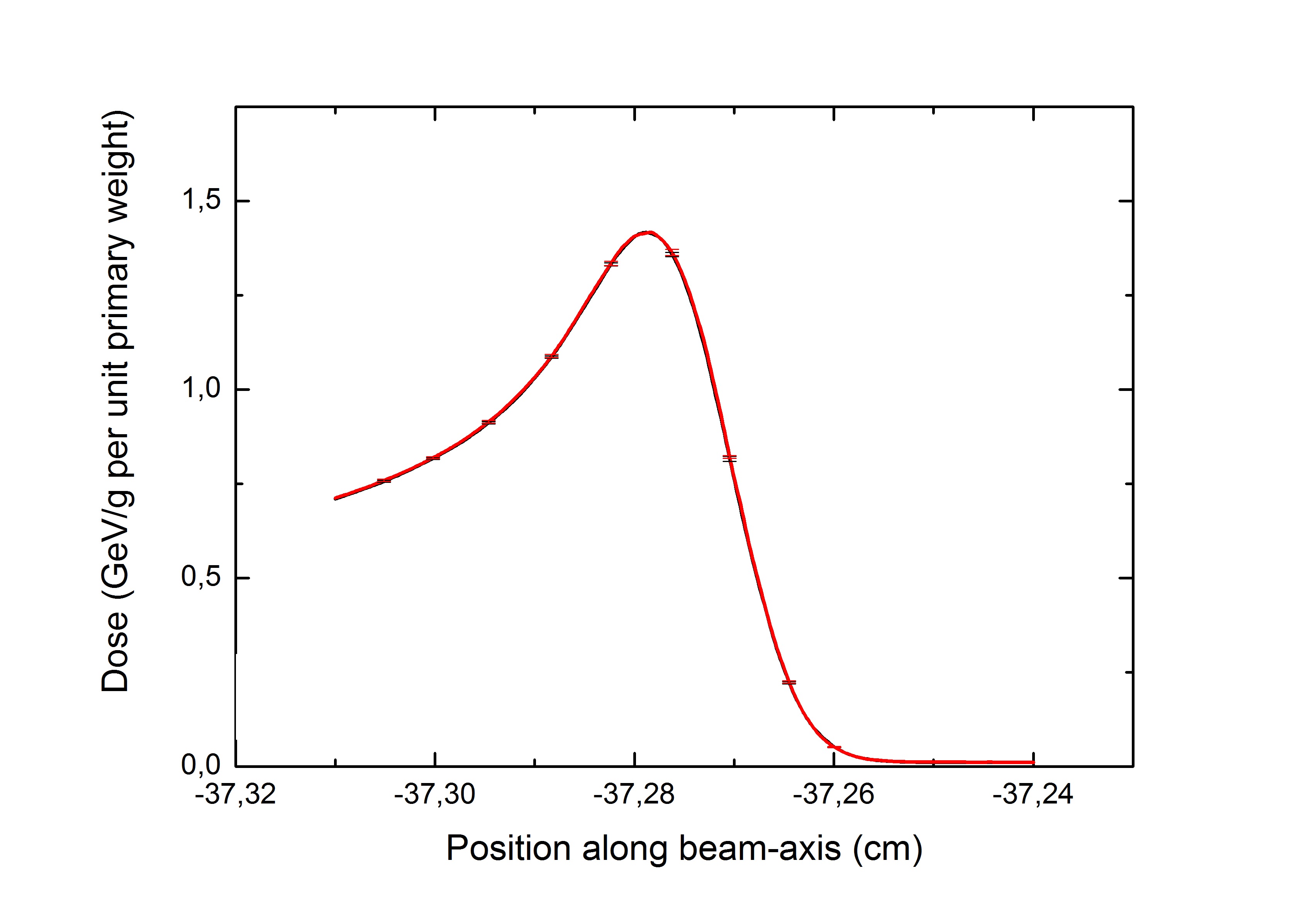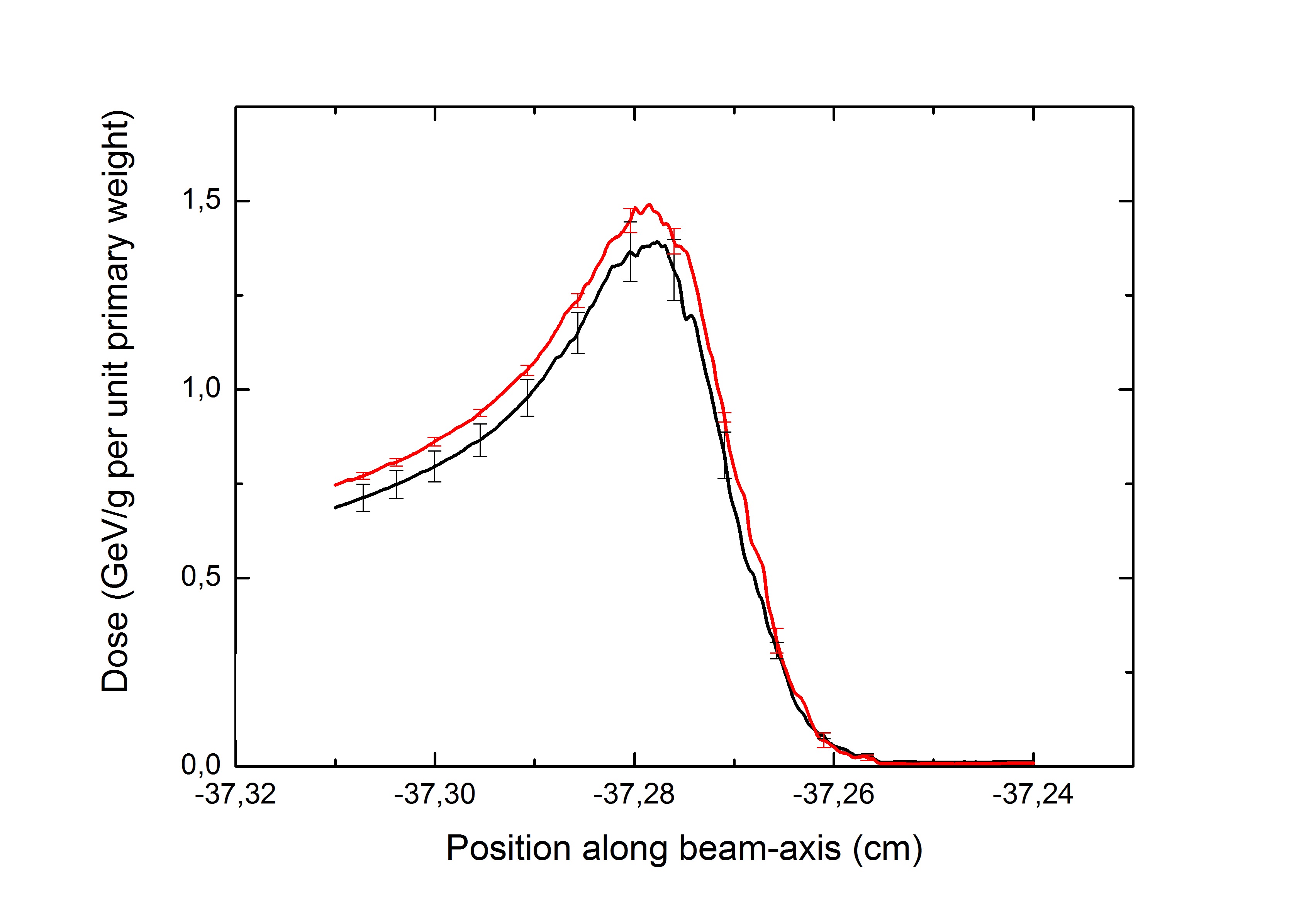Date: Mon, 5 May 2014 12:35:04 +0200
Dear Vottorio,
thank you very much for your answer!
I have attached the input-file. As you can see, I measure the dose along
the beam-axis in a waterphantom. In front of this phantom there is a region
(1 cm thick, called "ripple") containing air. The sourounding of my set-up
is also air. So technically, this region should have no influence at all.
In a second set-up I have just removed this region. The rest remains the
same.
When using <1E05 primaries (80 MeV cabon-ions) the depth-doses for these
two set-ups do not match within their errors around the bragg-peak. The
more primaries I use, the smaller the diefference gets until, when using
>1E07 primaries there is almost no difference left. (I have attached the
graphs. For a better overview there are only a few error-bars).
So I wonder, what exactly is happening around the surface between the
sourounding air and the air in the region. Are there any effects, because
FLUAK is perhaps switching between multi- and single-scattering? Or is
Fluka adapting path.lengths of the particles, when being near to a
regionborder?
Thanking you very much in advance!
Best regards,
Kilian
2014-04-30 23:13 GMT+02:00 Vittorio Boccone <dr.vittorio.boccone_at_ieee.org>:
> Dear Kilian,
>
>
>
>> When assigning the material of the
>> region to air, it should be as if there is no region at all (because
>> the enviroment and the region consist of the same material).
>>
> You assign it to air. Was it vacuum before or just the geometrical
> representation of the phantom was different?
> Which sizes are we talking about (meters, cm, mm or um?)
>
> However, the depthdose-curve (for <1E05 primaries) in the water-phantom is
>> significantly different to the depthdose-curve, when there is no
>> region.
>
> What do you meas about significantly different? Did you check the
> statistical error of the simulation?
>
>
>> However this effect gets lost, when using >1E07 primaries.
>>
> This is a sign that you are very much dominated by the statistical error
> with less then 10 Millions of particles. This is realistic because the dose
> in air requires typically a lot of statistics or larger averaging
> bins/regions.
>
> Your input file would be probably useful to check which are your physics
> setting and the scoring you are performing.
>
> Best,
> V.
>
>
> On Wed, Apr 30, 2014 at 10:05 PM, Kilian Baumann <baumann.kilian_at_gmail.com
> > wrote:
>
>> Dear Fluka-experts!
>>
>> I have discovered a (perhaps) strange result, when analysing the
>> depthdose-curve and fluence, when irradiating a waterphantom with a
>> region in front of it. My whole setup consists of the beam source (80
>> MeV carbon-ions), a water phantom and a region between waterphantmom
>> and source. The enviroment is air. When assigning the material of the
>> region to air, it should be as if there is no region at all (because
>> the enviroment and the region consist of the same material). However,
>> the depthdose-curve (for <1E05 primaries) in the waterphantom is
>> significantly different to the depthdose-curve, when there is no
>> region. However this effect gets lost, when using >1E07 primaries.
>> Furthermore I analysed the fluence at the surface of the region, so to
>> say at the surface between air and air and indepent on the amount of
>> primaries one can see a change in fluence at the surface.
>> My question now is, what FLUKA is exacly calculating near this
>> surface/region (perhaps some artefacts with single-/multi-scattering)
>> and if any effects are negiglibly if using a sufficient amount of
>> primaries.
>> Thanking you in advance!
>> Best regards,
>> Kilian
>>
>>
>
- application/octet-stream attachment: Region-10mm-Air.inp

(image/jpeg attachment: 1E07primaries.jpg)

(image/jpeg attachment: 5E04primaries.jpg)